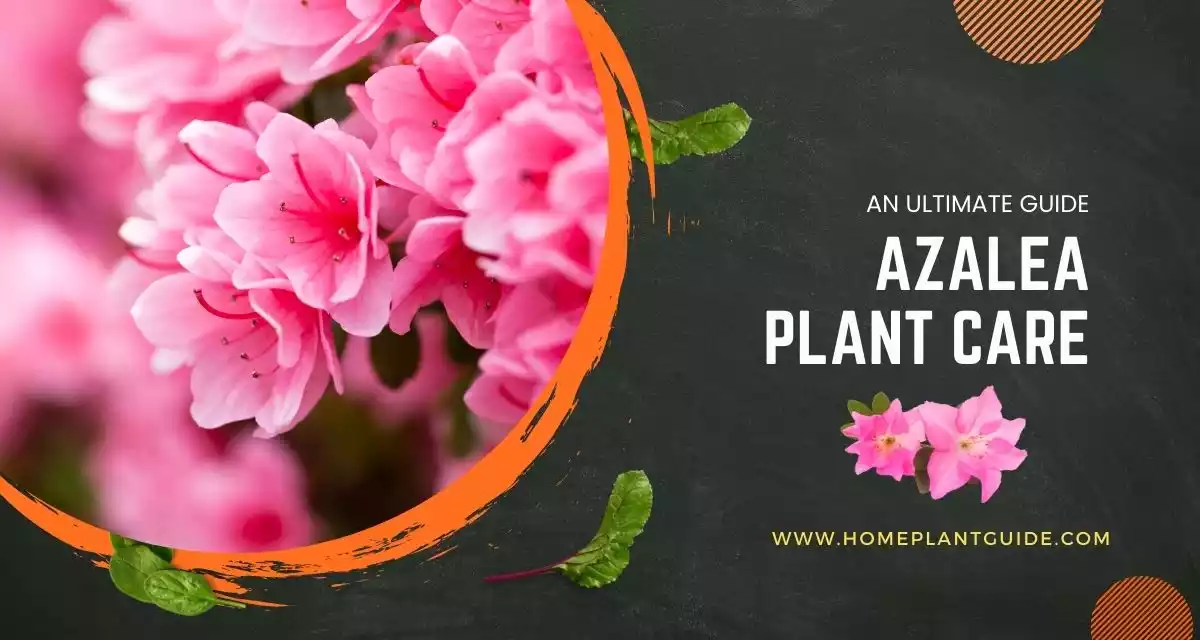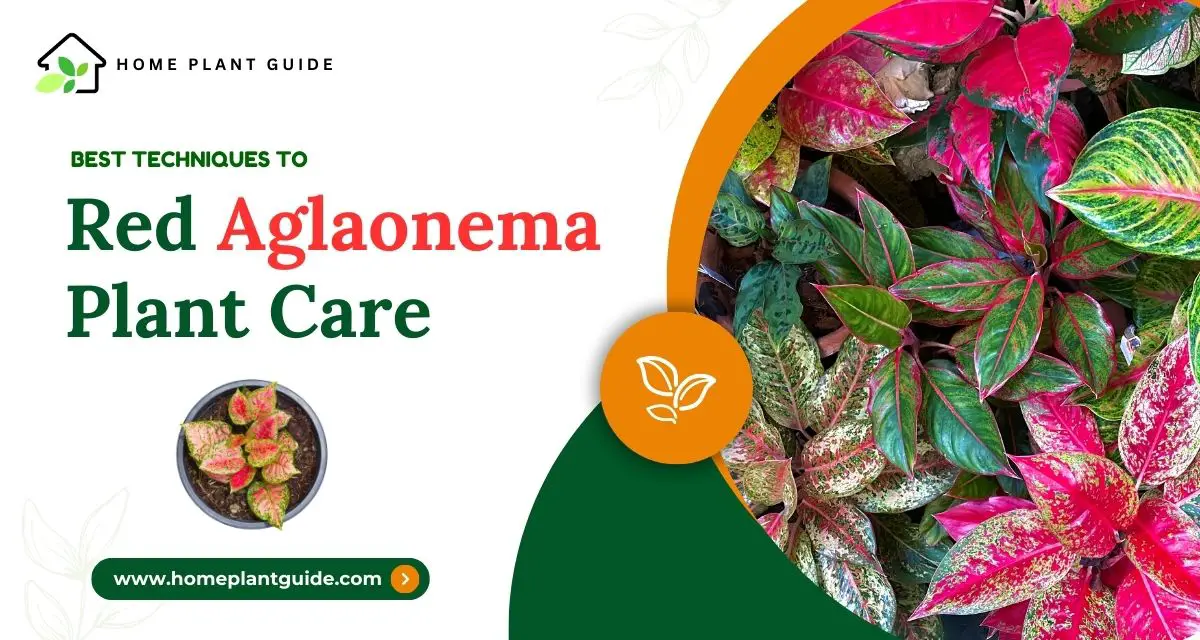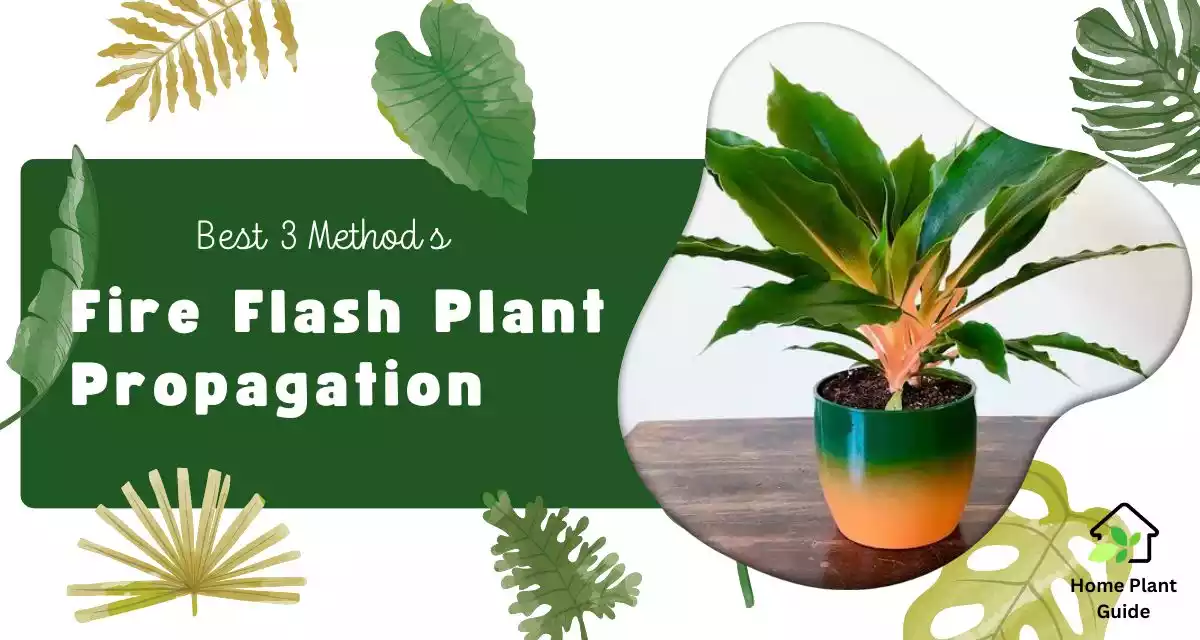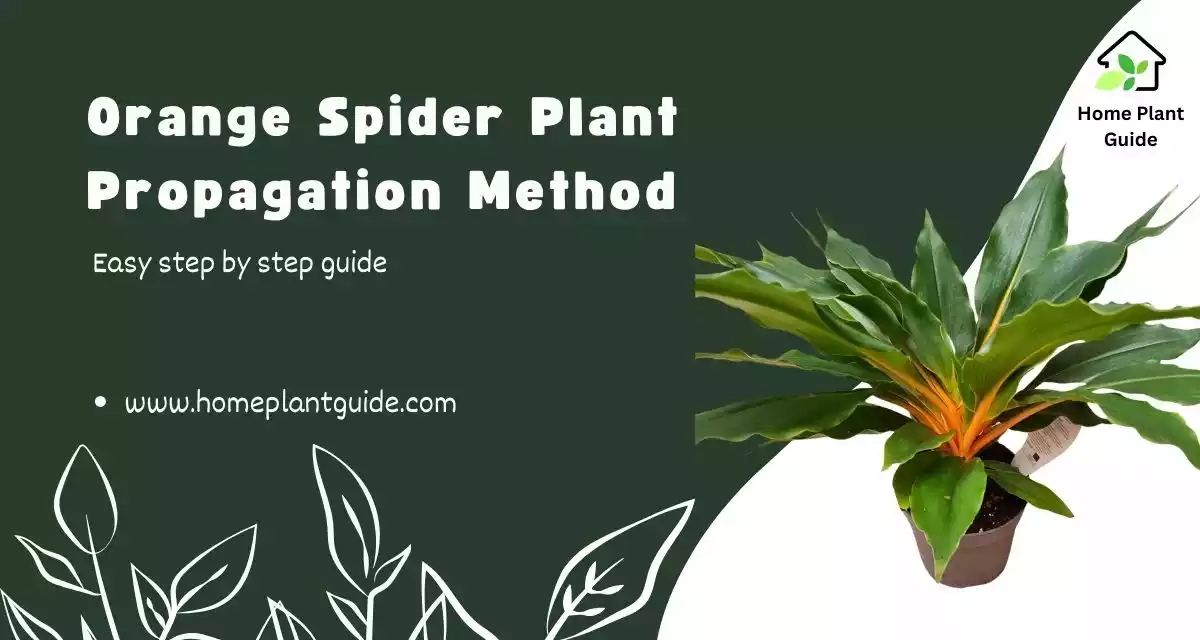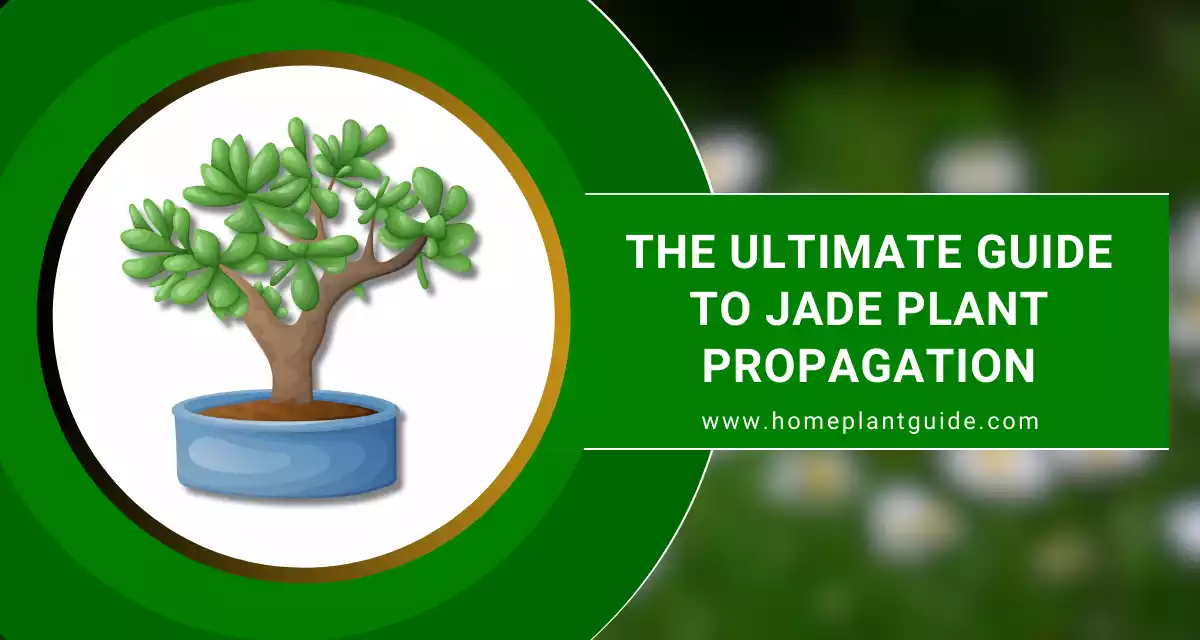The peacock plant is scientifically known as Calathea makoyana. It is a captivating and popular tropical houseplant cherished for its striking foliage. The origination of this plant is mainly from the rainforests of Brazil.
This plant has earned its common name due to the vibrant and intricately patterned leaves that resemble a peacock’s plumage.
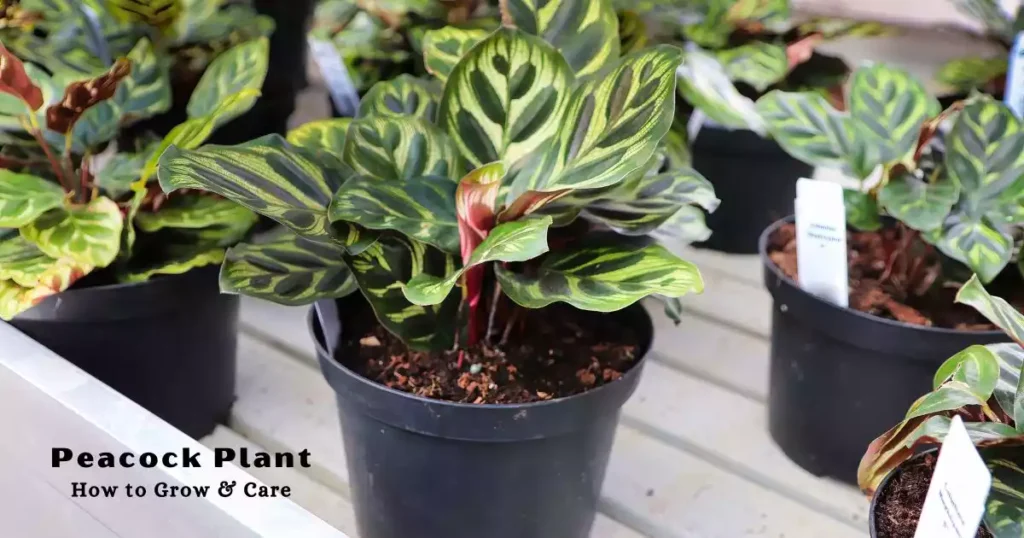
The leaves feature a rich palette of green hues. It is accented by intricate feather-like markings in shades of cream and pink. It is renowned for its ability to move its leaves in response to light.
The peacock plant exhibits a unique phenomenon called nyctinasty where the leaves open and close rhythmically throughout the day.
Peacock plant is favored as an indoor plant for its relatively low-maintenance requirements. The contribution of this plant to creating a beautiful environment at home and offices is immense.
In This Article
Specification of Peacock Plant
These are the important specifications of this plant.
| General Name | Peacock Plant, Cathedral Windows |
| Scientific Name | Calathea Makoyana |
| Plant Family | Marantaceae |
| Type of Plant | Evergreen, Herbaceous, Perennial |
| Mature Size | Up to 4 ft. tall |
| Flower color | White |
| Sun Exposure | Partial Sun, Full Shade |
| Type of Soil | Moist but well-drained |
| Soil pH Value | Acid, Neutral, Slightly Alkaline |
| Native Area | Eastern Brazil |
| Hardiness Zones | 10 – 11, USA |
| Toxicity | Non-toxic to both pets |
| Bloom Time | Anytime, but flowers are small |
How to Care for Peacock Plant
The peacock plant requires attention to its specific needs. But it needs to be ensured that the foliage is displayed stunningly.
Light
Peacock plants thrive in bright and indirect light. They prefer filtered sunlight. The sunlight can also be shielded from direct sun exposure. This is because direct sunlight can scorch their leaves.
The ideal location of the plant is near the north or east-facing window.
Watering
Keep the soil consistently moist but not waterlogged. Since peacock plants are native to rainforest areas, they prefer higher humidity levels.
You can pour water when the top inch of the soil feels dry. Even the use of lukewarm water should be avoided.
Humidity
Mimic the plant’s native environment by maintaining higher humidity. Regular misting or placing a tray of water near the plant helps to create a humid microclimate.
Soil
The soil should have a well-draining capacity with proper aeration and prevent waterlogging. A mix designed for tropical plants or orchids is often suitable.
Temperature
Try to maintain a warm environment. But ideally between 65-75°F (18-24°C) is good. Protect the plant from drafts and temperature extremes.
Fertilization
The main growing seasons of this plant in spring and summer. During the growing season feed the peacock plant with a balanced liquid fertilizer every 4-6 weeks. Reduce or stop fertilizing in the fall and winter when growth naturally slows.
Pruning
Always try to trim yellow or damaged leaves at the base using clean. You can use sharp scissors to encourage new growth and maintain the plant’s appearance.
By attending to these specific care requirements. You can enjoy the Peacock plant’s vibrant and intricately patterned leaves. It creates a lush and tropical atmosphere in your indoor space.
Peacock Plant Propagation
Propagating a Peacock plant can be rewarding. It allows you to expand your collection or share this beautiful plant with others.
The most common method of propagation for peacock plants is through division.
Here’s a step-by-step guide:
Required Materials for Plantation
Healthy mature plant
Choose a mature and healthy peacock plant as the parent plant for propagation.
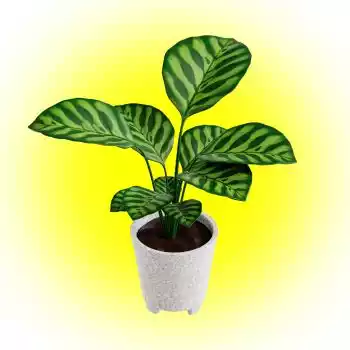
- Sharp Knife or Pruners: Use a clean and sharp knife or pruning shears for cutting.
- Potting Mix: Prepare a suitable potting mix. A well-draining blend enriched with organic matter is always a good choice.
- Pots or Containers: Take small jars or containers ready for the newly propagated plants.
- Watering Can: To water the newly potted divisions.
Select a healthy parent plant
Choose a mature peacock plant with multiple stems or shoots. Ensure the plant is free from pests and diseases.
Prepare the parent plant
Water the parent plant a day or two before propagation to ensure it’s well-hydrated. It makes the division process easier.
Remove the plant from the pot
Gently remove the peacock plant from its pot. Then take extra care not to damage the roots. If the plant is in a larger container, it may be easier to loosen the soil by tapping the sides of the pot.
Separate the shoots
Identify natural divisions in the plant where shoots emerge from the main rhizome.
Use a sharp knife or pruner to carefully separate these shoots from the parent plant. But ensure each division has roots and leaves.
Trim excess roots
Trim any excess or damaged roots from the divisions. It promotes healthy root growth in the new plants.
Plant the divisions
Plant each division in a small pot filled with the prepared potting mix. Ensure the plant is at the same depth as the parent plant’s pot.
Watering
Water the newly potted divisions thoroughly. Keep the soil consistently moist in the following week. It allows allowing the plants to establish roots in their new containers.
Provide indirect light
Place the newly potted divisions in a location with bright and indirect light. Avoid direct sunlight.
Read More Plantation:
Benefits of Peacock Plants
Here are a few important points about the benefits of peacock plants:
Air Purification
Peacock plants are excellent air purifiers. This can help to improve indoor air quality and reduce health problems.
Humidity Regulation
Peacock plants also help to regulate humidity levels in the home. It is more beneficial in the winter months when the air is naturally drier.
Stress Reduction
It can help to reduce stress levels. It can help to promote relaxation and well-being.
Low Maintenance
These are relatively low-maintenance plants. his is ideal for busy people.
Here are some additional benefits of peacock plants:
- They can help to improve sleep quality.
- It can boost mood and energy levels.
- Also, it can help to increase creativity.
- Help to reduce anxiety and depression.
- Make great gifts for friends and family.
Monitor and Care
Keep a close eye on the new plants for the first few weeks. Maintain a humid environment by misting if needed.
Once the divisions show new growth. You can gradually adjust care to match that of mature peacock plants.
Propagating a peacock plant through division is a straightforward and effective method with proper care.
New plants will flourish and display the characteristic vibrant and patterned leaves that make this species appealing.
Brown Tips for Peacock Plant
Brown tips on the leaves of a peacock plant are a common issue and often indicate that the plant’s environmental conditions need adjustment.

Several factors may contribute to the browning of leaf tips:
Low humidity
Peacock plants are native to tropical rainforests with high humidity levels. During the winter, the air can become too dry for the plant. At that time increasing humidity by misting the plant or placing a tray of water nearby can help alleviate this issue.
Improper watering
Overwatering or underwatering can lead to brown tips. Ensure that the soil remains consistently moist but not soggy. Pour water when the top inch of the soil feels dry.
Direct sunlight exposure
Exposure to direct sunlight, especially during the intense afternoon sun can scorch the leaves and lead to browning.
Peacock plants prefer bright and indirect light or filtered sunlight.
Chemical buildup in water
If the plant is consistently watered with tap water containing high levels of salts or chemicals, it may result in leaf tip burn. Consider using distilled or filtered water to prevent chemical buildup in the soil.
To address brown tips, adjust the plant’s care routine based on the specific factors contributing to the issue. Trimming the browned ends with clean scissors is also an option.
Regularly monitoring the plant’s conditions and making appropriate adjustments will help maintain the peacock plant’s lush and vibrant appearance.
Variegated Peacock plant
The Variegated Peacock plant is a captivating cultivar that boasts stunning leaves. It is adorned with intricate patterns and a mix of green and creamy-white hues.
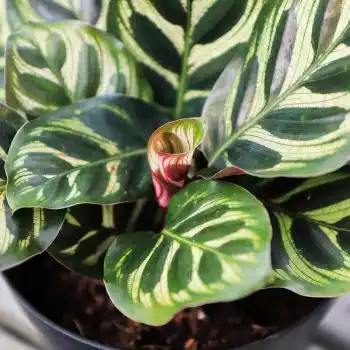
This unique variation enhances the visual appeal of an already-striking plant. It makes a popular choice among indoor plant enthusiasts.
The variegated peacock plant requires care tailored to its tropical origins. It requires bright and indirect light with consistent moisture. But the humidity level should be higher.
The variegated peacock plant adds elegance to interior spaces. It elevates the ambiance with its vibrant and variegated leaves.
Is Peacock Plant Toxic to Cats?
Yes. The peacock plant is considered non-toxic to cats. It makes it a safe and pet-friendly choice for households with feline companions. Unlike other houseplants that can be harmful if ingested by cats. However, the peacock plant poses minimal risk.
However, it’s always a good practice to monitor your pets around plants and consult a veterinarian if you observe any unusual behavior or symptoms.
While the peacock plant is generally safe. However, individual cats may react differently.
It’s crucial to ensure a pet-friendly environment by researching the toxicity of other plants in your home.
Conclusion
The peacock plant stands out for its stunning foliage and being a safe and non-toxic option for households with cats.
Its pet-friendly nature allows plant enthusiasts to enjoy the beauty of the peacock plant. You need not worry about potential harm to their feline companions.
It welcome addition to homes where both plants and pets coexist harmoniously.
FAQ:
Q: Is the peacock plant toxic to pets?
No. The peacock plant is non-toxic to cats and dogs.
Q: Can the peacock plant tolerate low-light conditions?
Peacock plants prefer bright and indirect light.
Q: Does the peacock plant require high humidity?
Yes. The peacock plant thrives in higher humidity levels.
Q: Is the peacock plant suitable for beginners?
It is considered a relatively low-maintenance plant making it ideal for beginners.
Q: Does the peacock plant need frequent repotting?
Peacock plants prefer slightly crowded roots and do not require regular repotting.
Q: Can brown tips on peacock plant leaves be trimmed?
You can trim brown ends with clean scissors.
Read More Easy & Healthy Plantation:
